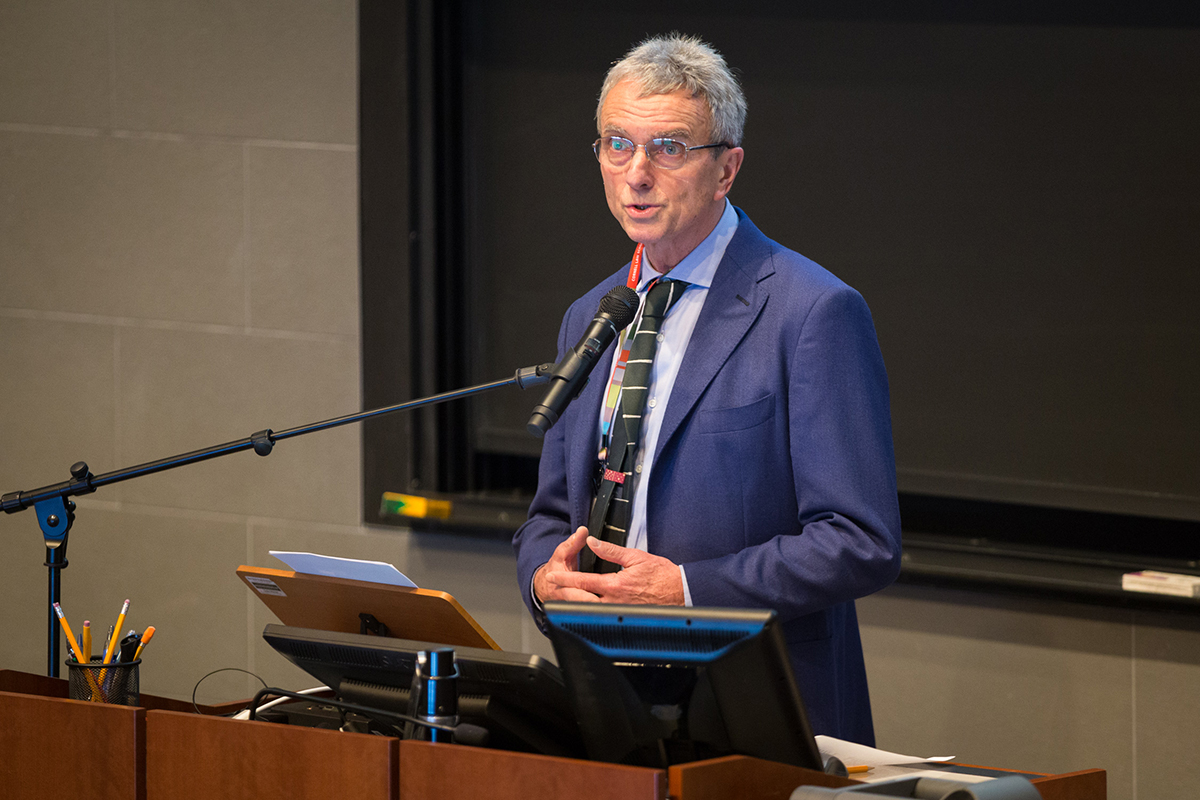Middle East refugees face complex landscapes
By Michelle Yang

Philippe Fargues, professor and director of the Migration Policy Centre at the European University Institute in Florence, Italy, shed light on facts and figures behind the Middle East refugee crisis and presented the questions and problems European nations face in response to the recent influx of asylum seekers.
Fargues delivered his keynote speech in Myron Taylor Hall Nov. 6 as part of the conference Beyond Survival: Livelihood Strategies for Refugees in the Middle East, which explored strategies to improve the livelihoods of refugees in the Middle East and Mediterranean. Discussions focused on evidence-based interventions to overcome legal barriers and policy impediments to refugees' access to education, health care and work, and the role universities can play to help improve the lives of refugees and asylum seekers.
Fargues began by declaring, “It is a crisis, it is not new at all, but a crisis in the sense of sudden change.”
The refugee crisis, he said, has become a “large-scale phenomenon” in which unauthorized entries by sea in Greece, Italy, Malta and Spain have surged from around 55,000 in 2013 to approximately 200,000 in 2014, with numbers rapidly increasing in 2015. Fargues said there have been big shifts in the popularity of migratory routes, correlated with changes in control. The western route from Morocco to Spain has been controlled by police and bypassed by the central route from Libya to Italy. Fargues stressed that the Mediterranean Sea is the world’s most dangerous migratory route and said this crisis consists of refugees and migrants from a large variety of nationalities, Syrians being this most common.
Refugees face complexity in Europe, Fargues said, to reach their countries of intended destination, which include Germany, Denmark and Sweden. Transit countries – the ones refugees must cross to get to their final destinations – have differing border controls. Some transit countries, like Greece, are Schengen Area countries that have abolished common border control. Greece shares land borders with non-Schengen countries, making it difficult for refugees to reach northwestern Europe.
As to what triggered the crisis, Fargues said it is a debate between push and pull factors. The pull factor hypothesis holds that European countries are being too attractive, such as Germany’s warm welcome to the first wave of refugees. However, Fargues said he believed in the push factor hypothesis, which holds that the turmoil and emergence of the Islamic State in Syria has been driving out Syrians to Europe for safety.
In reaction to the crisis, some transit nations have been generous, while others, Fargues said, “do not impose the entry of refugees most of the time, but they facilitate the fastest possible exit of the refugees.” Fargues pointed out that this crisis has increased European gross domestic product by 0.2 percent and accepting refugees into labor markets could be beneficial to Europe’s economy.
The conference was co-hosted by the Clarke Initiative for Law and Development in the Middle East and North Africa, Weill Cornell Global Emergency Medicine Division and the Ottoman and Turkish Studies Initiative. It engaged academics and practitioners in a multidisciplinary exploration of strategies to improve short and long term livelihood opportunities for refugees in the Middle East and the Mediterranean basin.
Michelle Yang ’18 is a writer intern for the Cornell Chronicle.
Media Contact
Get Cornell news delivered right to your inbox.
Subscribe